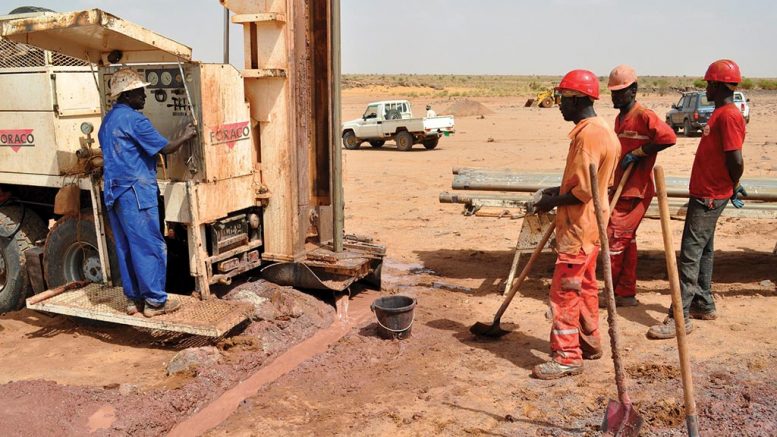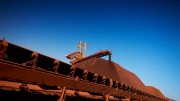The global uranium mining market in the 2010s took a hit from the Fukushima nuclear disaster in Japan in 2011 — which cut global uranium demand some 10% for many years — and the simultaneous ramping up of low-cost uranium production out of Kazakhstan that has transformed the country into the world’s largest uranium producer.
Thanks to the massive devaluation of the Kazakhstan tenge currency in 2014 and 2015, the country is also easily the lowest-cost producer in the world, with its in-situ recovery mines operated by Kazatomprom and Uranium One dominating the first two quartiles of uranium mining costs globally in 2018.
With Kremlin-backed Russian interests heavily influencing Kazatomprom and Uranium One, and the Russian government striking numerous nuclear-energy cooperation deals in developing countries across the globe, it couldn’t be clearer that the global nuclear fuel cycle is increasingly controlled by Russia, with all its geopolitical implications for the rest of this century.

Cameco’s McArthur River uranium mine in Saskatchewan, as seen in 2014. Credit: Cameco.
While Russian President Vladimir Putin plays the long game, leaders in the West don’t seem to realize any game is being played at all, with domestic U.S. uranium production controlled by Americans reduced to almost nil, and Canada’s uranium leader Cameco forced to indefinitely suspend mining at arguably the richest uranium mine, McArthur River in Saskatchewan, which nevertheless sat in the third quartile of global uranium mines on a cost basis before the suspension.
With our latest issue focused on mineral development and mining in Africa, it’s worth taking a look at the havoc low uranium prices have played on African uranium mining and exploration.
Perhaps the biggest casualty was the demise of French state-owned nuclear giant Areva, with its deep connections to uranium mining and exploration in the former French colonial states of West Africa. After an insolvency followed by a massive restructuring, the uranium mining assets are now held and operated by Paris-based Orano.
In Africa, Orano’s key uranium mines are Somair and Cominak in Niger, with the imminent closure of Cominak confirmed in May 2019, and the mothballed Trekkopje mine in Namibia. Even with all three mines operating back in 2017, Africa still only accounted for 12% of Areva/Orano’s global production, with the rest coming out of its mines in Kazakhstan, Canada, Australia and Russia.
Australian junior Paladin Energy has also suffered, despite holding high-quality uranium assets in Africa. Its long-established Langer Heinrich uranium mine in Namibia was placed on care and maintenance in May 2018, while its Kayelekera uranium mine in Malawi was similarly mothballed in 2014.

A view of Rossing Uranium’s open-pit uranium mine in 2006. Credit: Rossing.
Rio Tinto’s 65.58%-owned Rossing uranium mine in Namibia stands as the world’s longest-running, open-pit uranium mine, operating since 1976, and has produced the most uranium of any single mine. Total production costs at Rossing were over US$70 per lb. U3O8 in 2018, though, making it the highest-cost major uranium mine in the world, with spot prices still limping along in the mid-US$20s range in June 2019.
In November 2018, Rio Tinto struck a deal to sell its entire stake in Rossing to China National Uranium Corp., but the sale still needs approval from the Namibia Competition Commission. Rio Tinto is warning that the mine will close in 2020 if its deal with CNUC collapses.
The Namibian government holds a 3% stake in Rossing, but has 51% of voting rights, while the Iranian government’s Iranian Foreign Investment Co. has a 15% stake.
Sibanye-Stillwater and AngloGold Ashanti are also minor uranium producers in Africa, as a by-product of their precious metals mining.
Junior uranium explorers and developers that have had technical success in recent years in Africa include Govind Friedland-led GoviEx Uranium in Niger; Stephen Roman’s Global Atomic, also in Niger; and Forsys Metals in Namibia.
In a uranium-focused gathering in Toronto in mid-June hosted by Red Cloud for its clients, it was clear that the players in North America’s uranium mining subsector have held their breath over the past few months waiting for the Trump Administration’s response to the “Section 232” probe, expected by July 14. This is a petition filed by U.S. uranium mining companies Ur-Energy and Energy Fuels, who have complained that subsidized foreign uranium production “dumped” into the U.S. — especially from Kazakhstan and Russia — have deeply damaged the domestic industry, and endangers national security.
The complainants suggest the U.S. government impose a requirement that U.S. nuclear utilities buy 25% of their uranium from U.S. domestic suppliers. Uranium investors hope any such “Buy American” move will substantially lift uranium prices, and relieve the most beleaguered of mining subsectors.




Be the first to comment on "Editorial: Global geopolitics sideswipe African uranium miners"